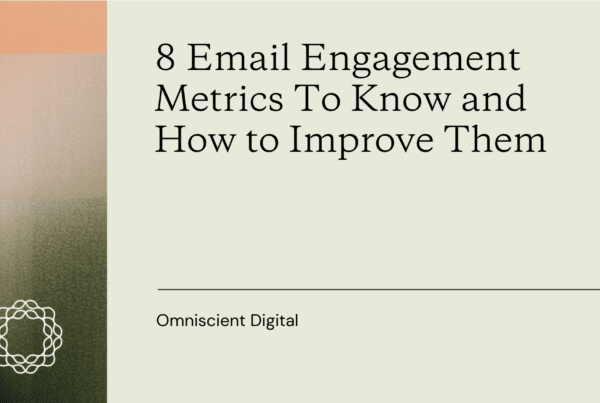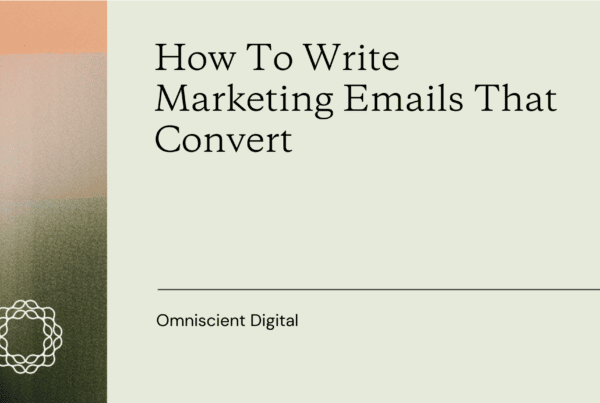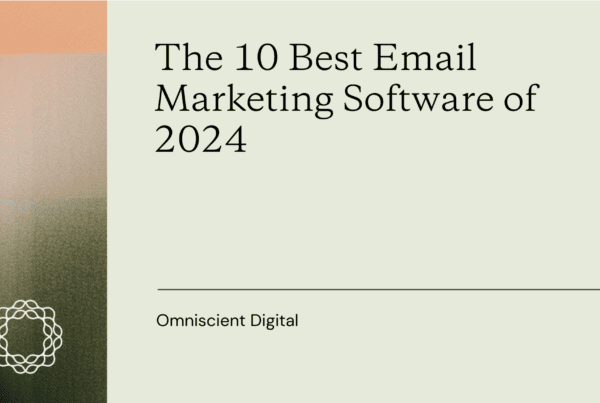
If you’re using email marketing to increase sales revenue while improving retention and loyalty, you know how effective it can be.
Not only does email marketing help you improve conversions, but it also supports other goals such as increasing brand awareness, driving more traffic to your website, and nurturing your leads to get more SQLs.
However, with all that choice and the different ways you can use email marketing to grow your business, keeping your subscribers and leads engaged is still a challenge.
In this post, we’ll be discussing how you can get around this challenge by adopting a different kind of strategy for B2B email marketing to improve engagement so that you can consistently generate a solid ROI from email campaigns.
Why B2B email marketing requires a different type of strategy
Your target buyers are on a buying journey and as Gartner illustrates below, their journey isn’t linear:

And if you’re wondering how long it takes for them to make a purchase decision, the first interaction to a won deal takes an average of 192 days.
Decision-making involves multiple stakeholders which requires extensive research and evaluation of the available options.
Since B2B email marketing campaigns involve sending targeted emails to your subscribers and leads throughout their buying journey, your email marketing strategy should focus on keeping them engaged until they’re ready to buy.
An e-commerce email marketing agency can help you with all aspects of your email marketing campaign, from designing and sending emails to tracking and analyzing results. They can also help you create a personalized email marketing strategy that is tailored to your specific business goals.
Read how GatherContent grew organic sessions by 867% and leads by 62%.
7 proven strategies to improve engagement in your B2B emails
By adapting B2B email marketing strategies to the longer and more complex sales cycles, you can effectively engage and nurture prospects, build relationships, and improve your conversion rates to drive SaaS business growth.
Here are seven proven strategies for generating results with B2B emails:
1. Focus on building relationships
Since the business-to-business sales cycle involves multiple stakeholders and decision-makers, your email marketing campaigns should focus on building and nurturing relationships with them.
Instead of using purely promotional content in your email campaigns, include other types of content such as industry insights, thought leadership content, and case studies that address their pain points and challenges.
For example, here at Omniscient, we send out a weekly Field Notes newsletter. In this snippet, Mason, our head of outreach explains why we focus on fewer link-building metrics:
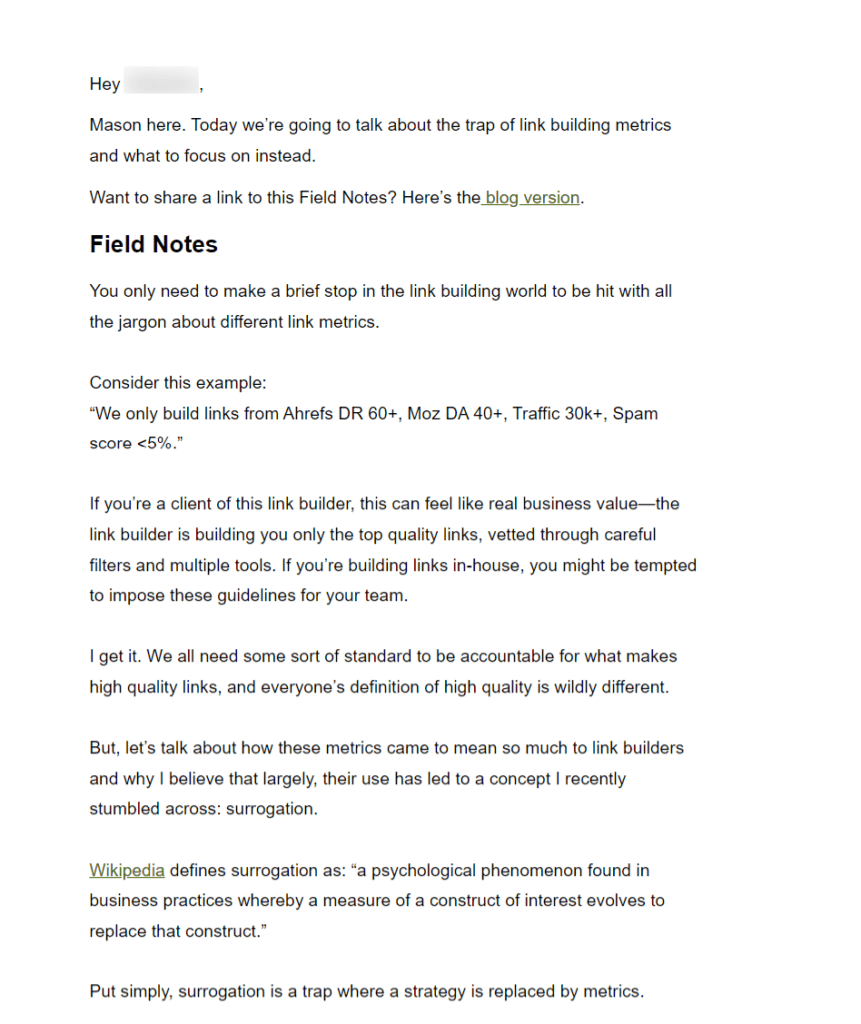
Sending these emails empowers your audience to solve their problems even before they sign up for your product or service, making it easier for them to trust that you’re capable of meeting other business challenges they may have.
After all, your target buyers are more open to engaging with your emails as they move closer to deciding who to buy from:

2. Segment your email list
A one-size-fits-all approach to email marketing won’t cut it. Throughout their buying journey, your leads and subscribers have diverse needs, preferences, and pain points. To improve the level of engagement and get more conversions, segment your email list.
“When it comes to B2B list segmentation”, says Virginia Zacharaki from Moosend, “you need to be mindful of parameters such as the position of each decision-maker and the company size.”
Segment your email list based on industry, job title, or company size to help you tailor your emails so that they resonate with each recipient. Also, make sure to check your list of email accounts with an email verification tool to avoid from cyber threats, such as spear phishing and sending emails to non-existent addresses.
Zacharaki continues: “Understanding the differences between a manager in an SMB and a solopreneur can make a huge difference in personalization and will help you come to an agreement faster.”
This allows you to personalize your emails and send them to specific segments, ensuring that your messages resonate with their unique context and challenges, helping them move closer to the decision stage of their buying journey.
3. Use multiple touchpoints
According to the State of Email Workflows report, 30% of email marketers are allocating 15% of their budget to integrating their email marketing efforts with other channels such as online review platforms, paid advertising, and social media marketing.
Integration will help them create a cohesive, omnichannel marketing approach, which will increase the effectiveness of their email campaigns.
For example, if you’re hosting a digital event, make sure to promote it both in your emails and social media channels. In March, we hosted a virtual summit, Road To Mastery.
Here’s one of the emails we sent out to our email list:

Here’s our tweet promoting the event:
Here’s a LinkedIn post promoting the summit:

Adopting a coordinated and consistent promotion strategy across relevant channels amplifies your email marketing efforts by ensuring that your prospects receive a unified experience throughout their buying cycle that reinforces your key selling points.
4. Personalize without being invasive
Closely related to segmentation, personalization helps you improve engagement by making sure that your content resonates with your subscribers and leads.
However, to succeed at personalization, you need to strike a balance between personalization and invasiveness.
Invasiveness can take many forms, but this rant on Twitter depicts how brands can become invasive:
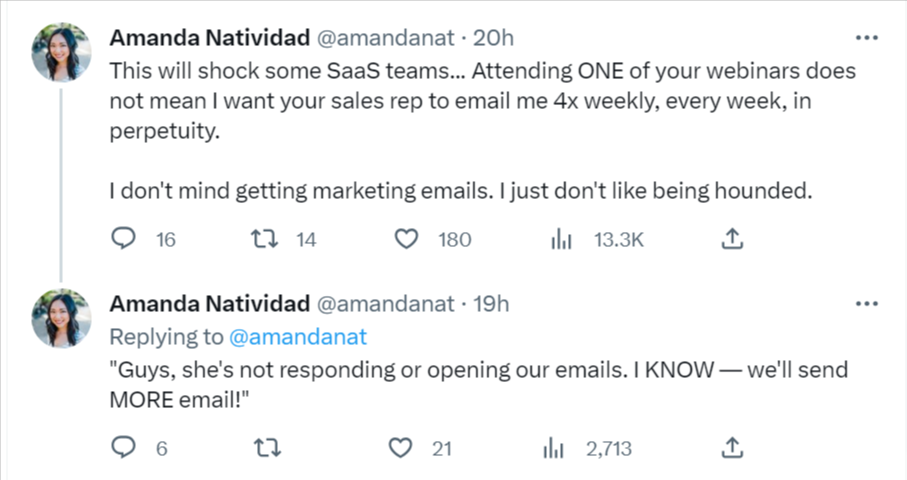
In addition to being annoying, you end up sharing too much information with your subscribers, which leads to overwhelm. This doesn’t improve engagement because you’re not the only one who is sending them emails.
So, how do you personalize without being invasive?
If a lead provides their email for a specific purpose—for example, gaining access to your gated content—don’t use their email for unrelated campaigns.
Provide your subscribers with an option to choose their email preferences, such as the content topics they want to receive or how often they want to hear from your brand. Respect your recipients’ preferences on email frequency and timing to avoid being invasive. Many B2B email marketing platforms make it easy to manage these preferences and personalize communication at scale.
Make it easy for your subscribers to unsubscribe without requiring them to enter their login details, and avoid any other sneaky tricks that brands have to prevent their subscribers from leaving their email list.
5. Embrace different perspectives
If you run email marketing campaigns in isolation, you’re going to struggle with a lack of diverse perspectives, leading to low engagement.
However, embracing different perspectives allows you to leverage the expertise, resources, and other people’s networks to improve engagement.
It includes allowing other team members to share their expertise in your email content or even including user-generated content in your emails. At Omniscient, we take turns writing the weekly Field Notes newsletter:

Embracing different perspectives expands your reach because you’re not only looking to convince end users—you also need decision-makers on your side.
In addition to sharing their latest content, new features, and integrations, Zapier highlights a community member who shares how the tool has helped her grow her career. Here’s a snippet of their email newsletter:
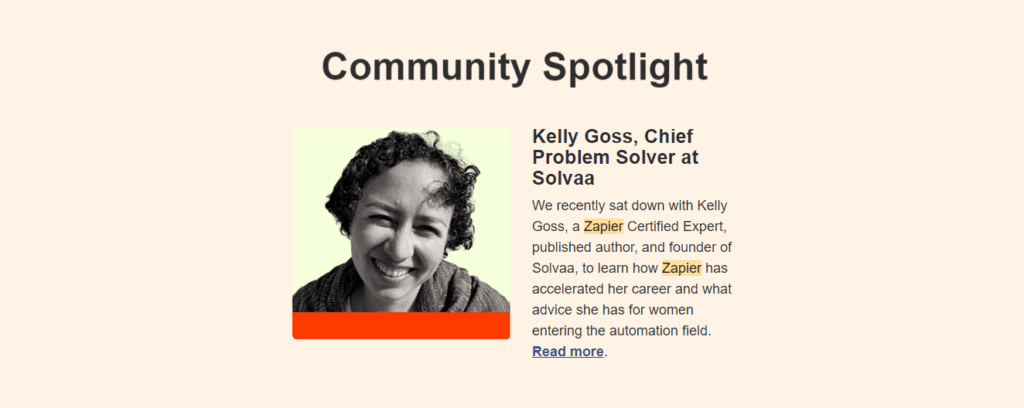
See how Order.co grew organic blog sessions by 1682% and blog conversions by 11x.
6. Use feedback to optimize your email copy
Once your email arrives in your subscriber’s inbox, they’ll do one of the following things:
- They will take a glance at the subject line and decide whether to click on it or ignore it.
- They will open your email and skim through your content then click back as if nothing happened.
- They will read your email and decide whether to engage based on your call to action.
If more subscribers go with the third option, you’re more likely to run a successful email campaign.
However, subscribers are spending less time reading emails.
In 2022, email subscribers spent an average of nine seconds reading emails as compared to 13 seconds in 2018.
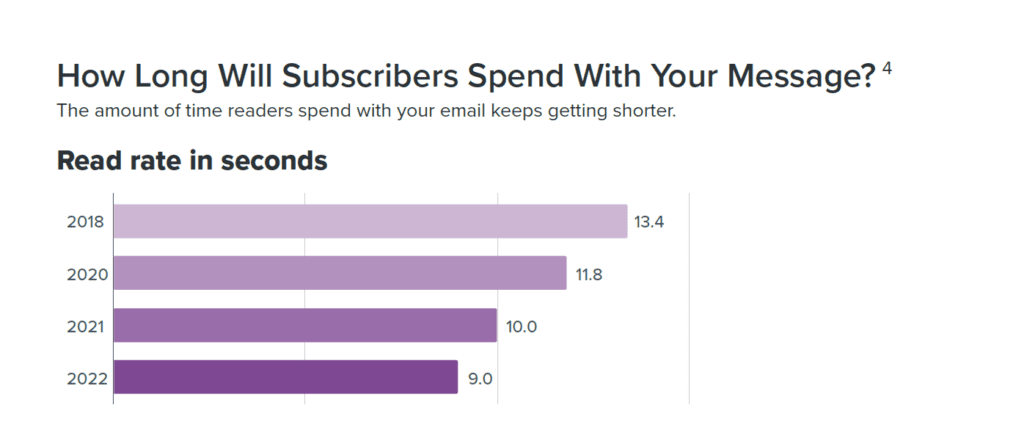
A few reasons behind this might be an overcrowded inbox, checking emails on the move (or in the middle of a task), or unengaging copy.
The first two reasons are out of your control, so to make sure that they spend more time reading your emails, make your copy engaging by making sure it resonates with subscribers.
Start by collecting data through micro surveys that allow you to ask specific and relevant questions that require minimal effort to answer.
By asking targeted questions, you gain valuable insights into their pain points, needs, preferences, and expectations. These insights help you tailor your email content, messaging, and offerings to better resonate with your audience.
Here’s an example of a micro survey email we include in our weekly newsletter:

In addition to demonstrating that we value our subscribers’ opinions, this survey makes them feel like they have a stake in the content we send out each week in our newsletter.
Subscribers who fill out this survey provide us with feedback that helps us improve our newsletter and increase engagement.
7. Experiment by combining different campaign types
Before they commit to buying from you, your subscribers you’ll need to eliminate the friction that comes from their doubt about your brand or product.
If you’re asking them to switch from a competitor, then you’ll need to convince them that you’ll live up to your promises. Other times, they might just be price-conscious.
To get around each of these doubts and improve conversions, combine different types of email campaigns.
For potential customers who want to switch but are worried whether you’ll live up to their expectations, consider combining a feature update email and a product launch email. Here’s an example from Semrush:

In this email, Semrush announces its new app, Kompyte, and a couple of new features. For new, undecided potential users, this is a demonstration of the value they’ll get once they start paying for the SEO tool.
Besides, Semrush offers the app at a discount for their customers, lowering the concerns that price-conscious customers have about an increased monthly subscription. Such a campaign improves loyalty by emphasizing why customers should continue sticking around.
Alternatively, you could combine a content campaign with a product discovery campaign to help your audience take the steps they need to solve their problems. Here’s how Miro does it:

In addition to providing suggestions on how a subscriber can lead a hybrid meeting, they also offer relevant resources to implement these suggestions.
There’s a resource for an audience segment looking to integrate Miro with other marketing tools in their tech stack, another for a segment that is looking for templates, and lastly, features that they can take advantage of to have an engaging meeting.
This could have been two emails, but combining them makes it even more relevant and nudges the subscriber to take action by discovering what they can do using Miro.
Conclusion
When running your B2B email marketing campaigns using the strategies we’ve discussed, keep in mind to hire top email marketers, and remember that sales cycles in B2B companies take time.
Since the content you create is a key component of your email marketing campaigns, you’ll also need to start scaling your content efforts, optimizing old content to get more traffic and leads, to help you achieve the goals outlined in your content strategy.
At Omniscient Digital, we work with B2B SaaS companies like GatherContent, Jasper, and Shipyard to develop and implement a content strategy aligned with their business objectives. If you’re looking for help with content strategy, SEO, or link building, we might be able to help. Fill out this form for a free strategy call.

